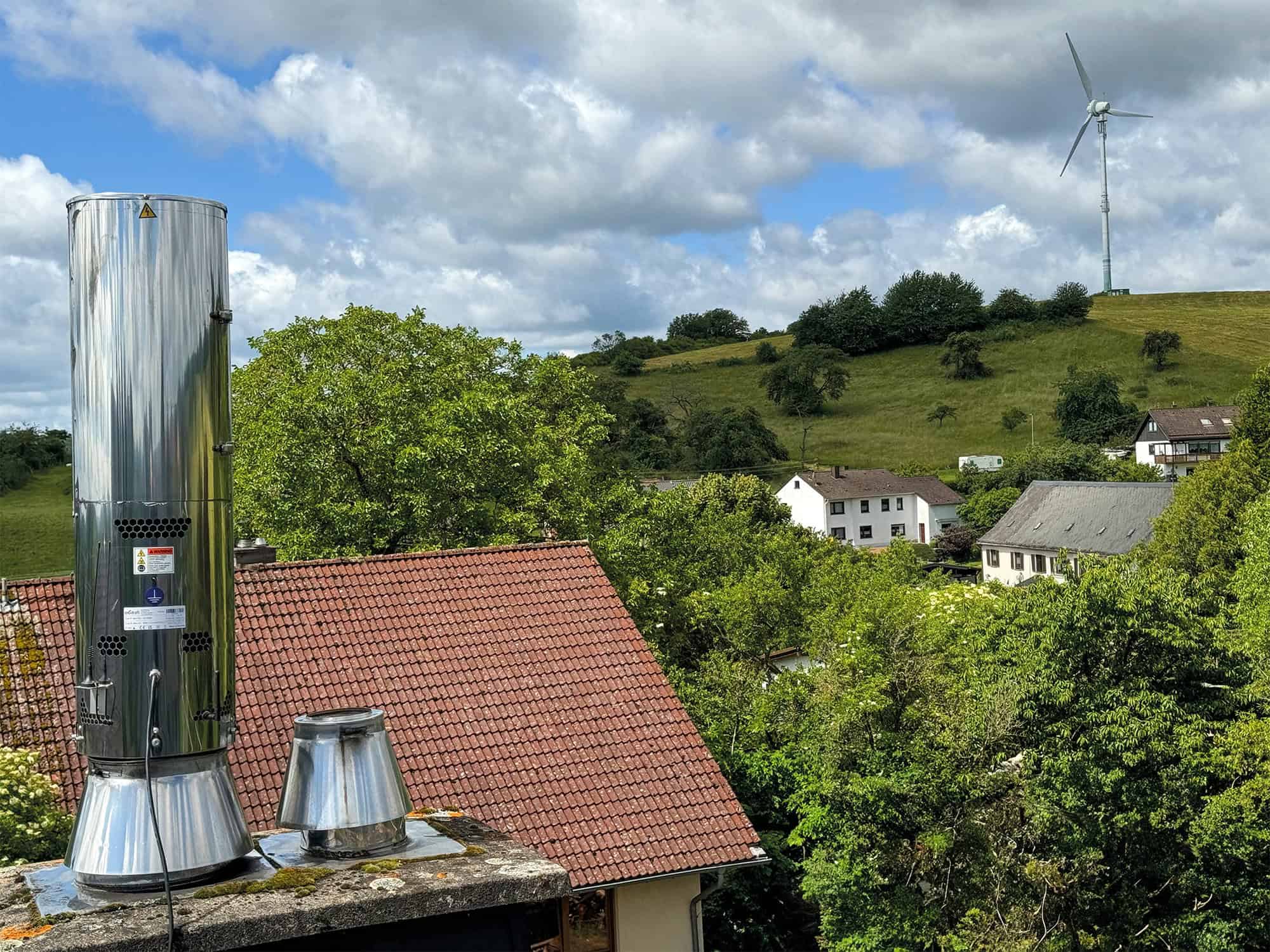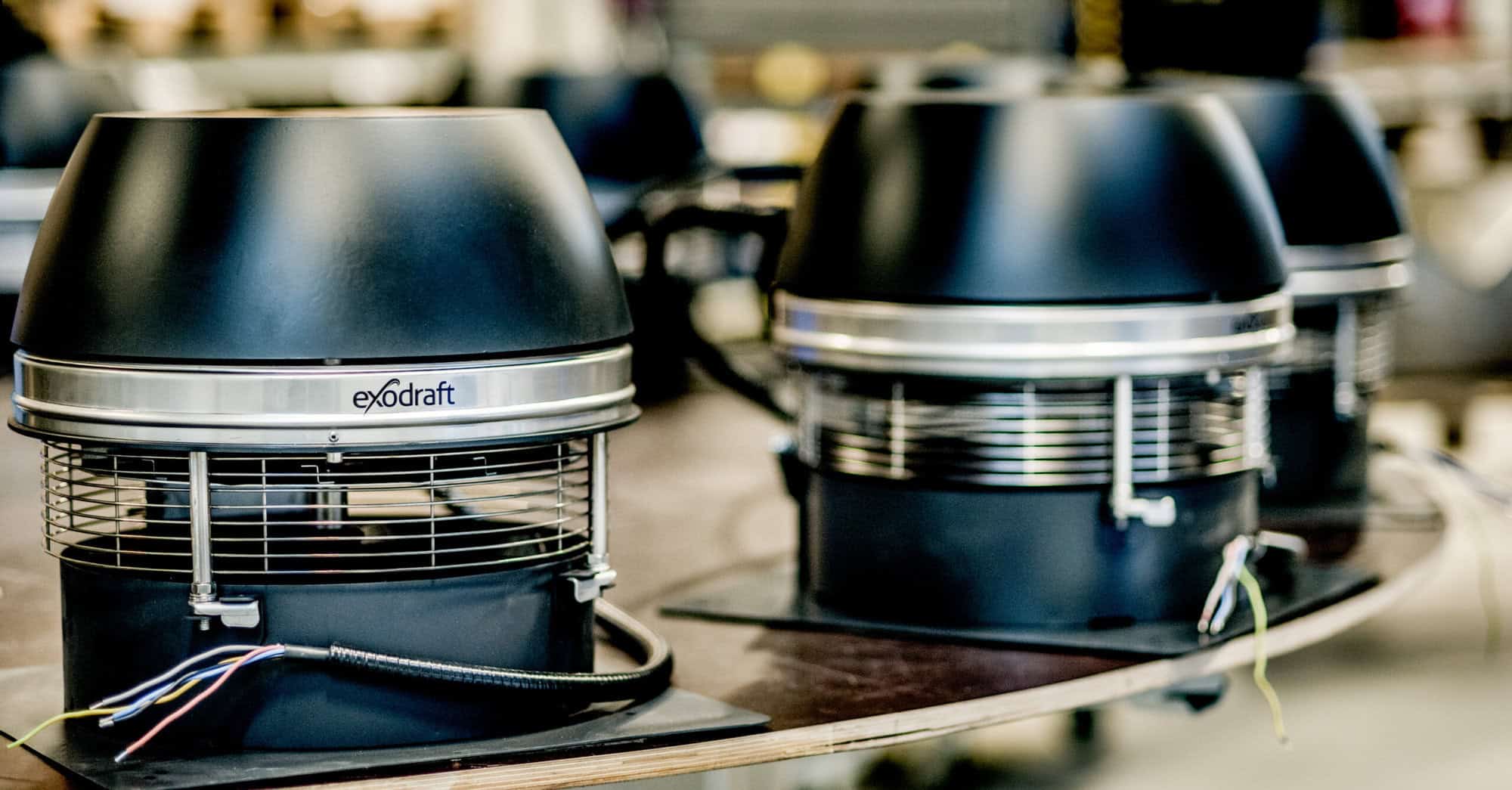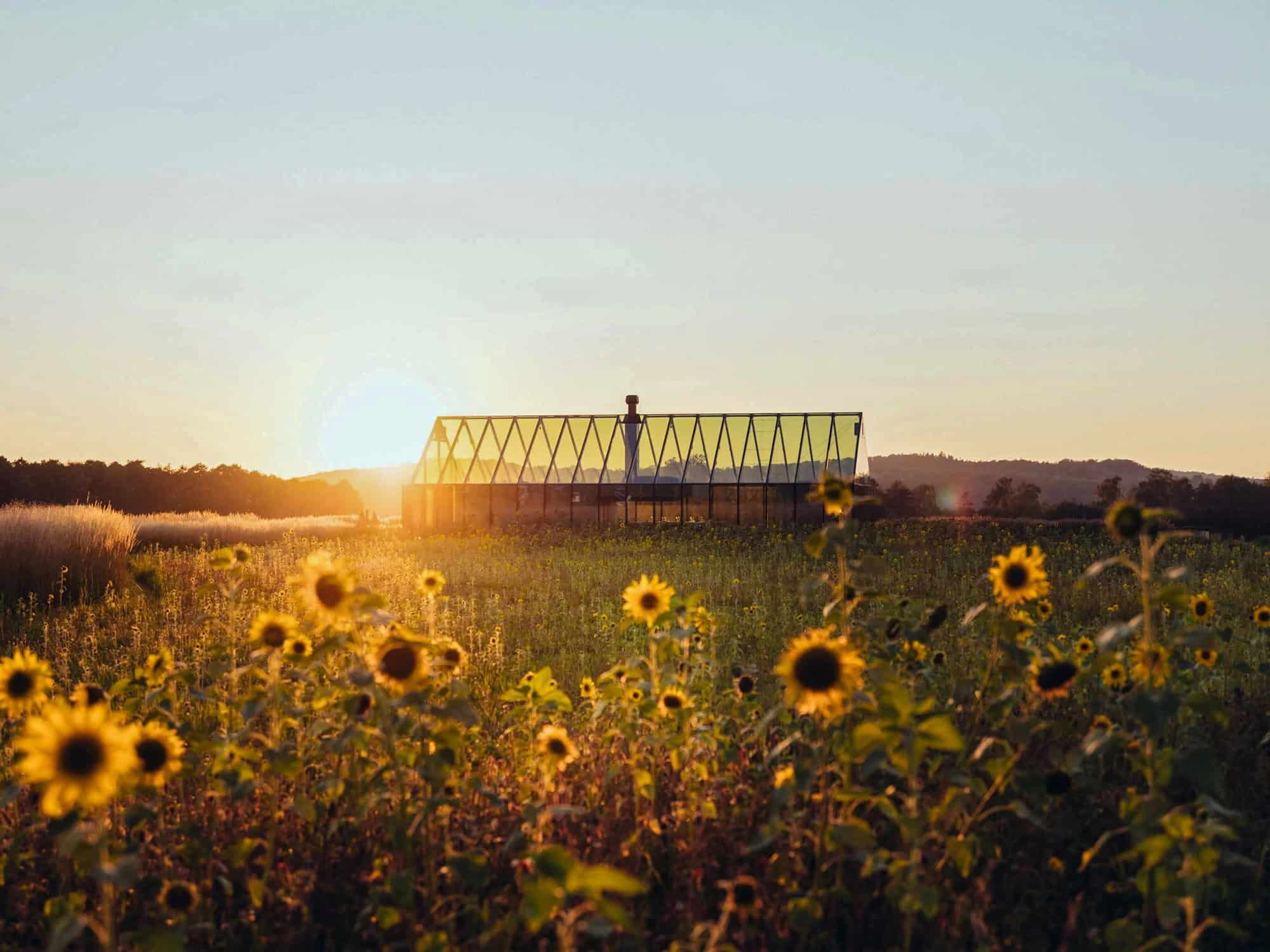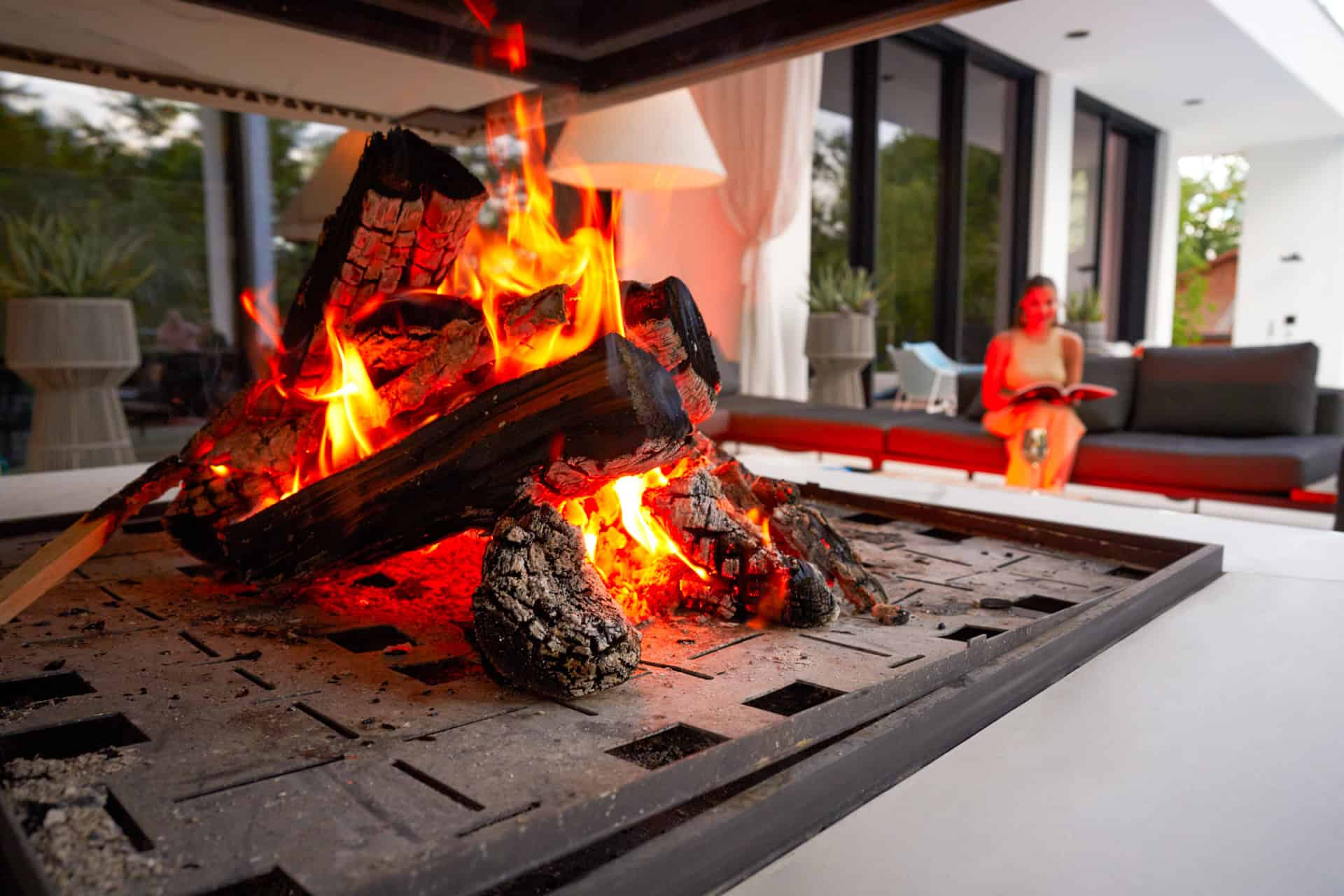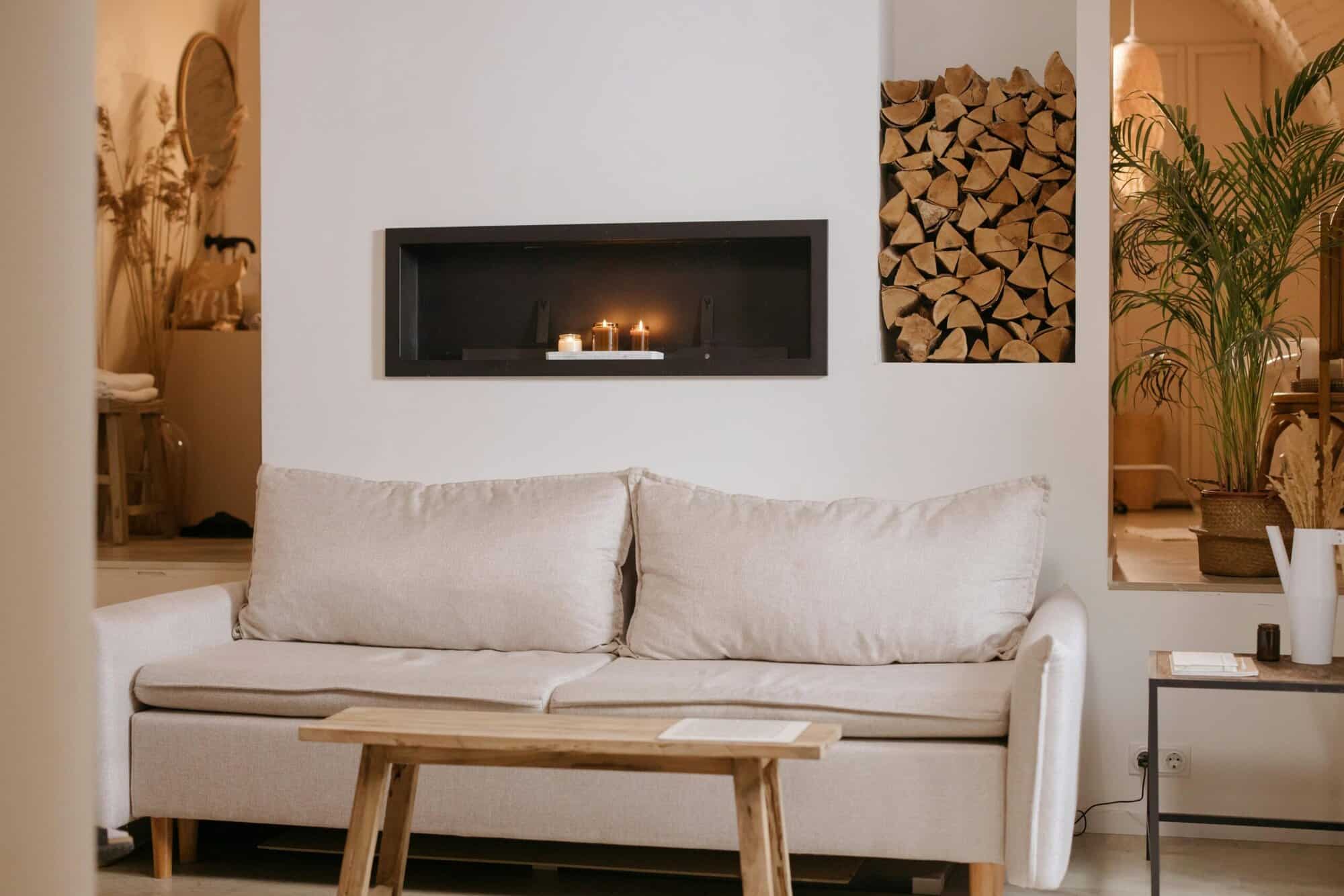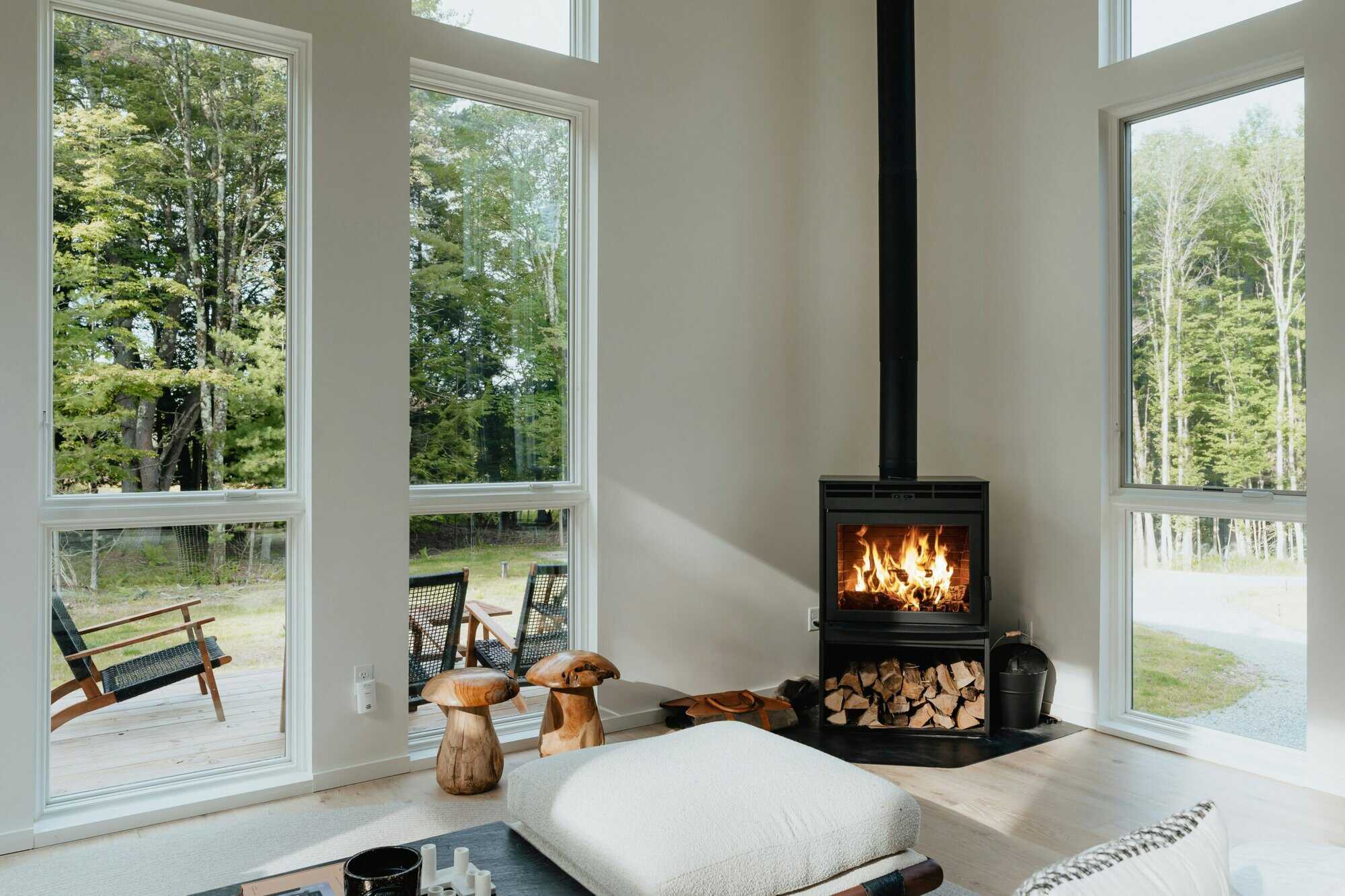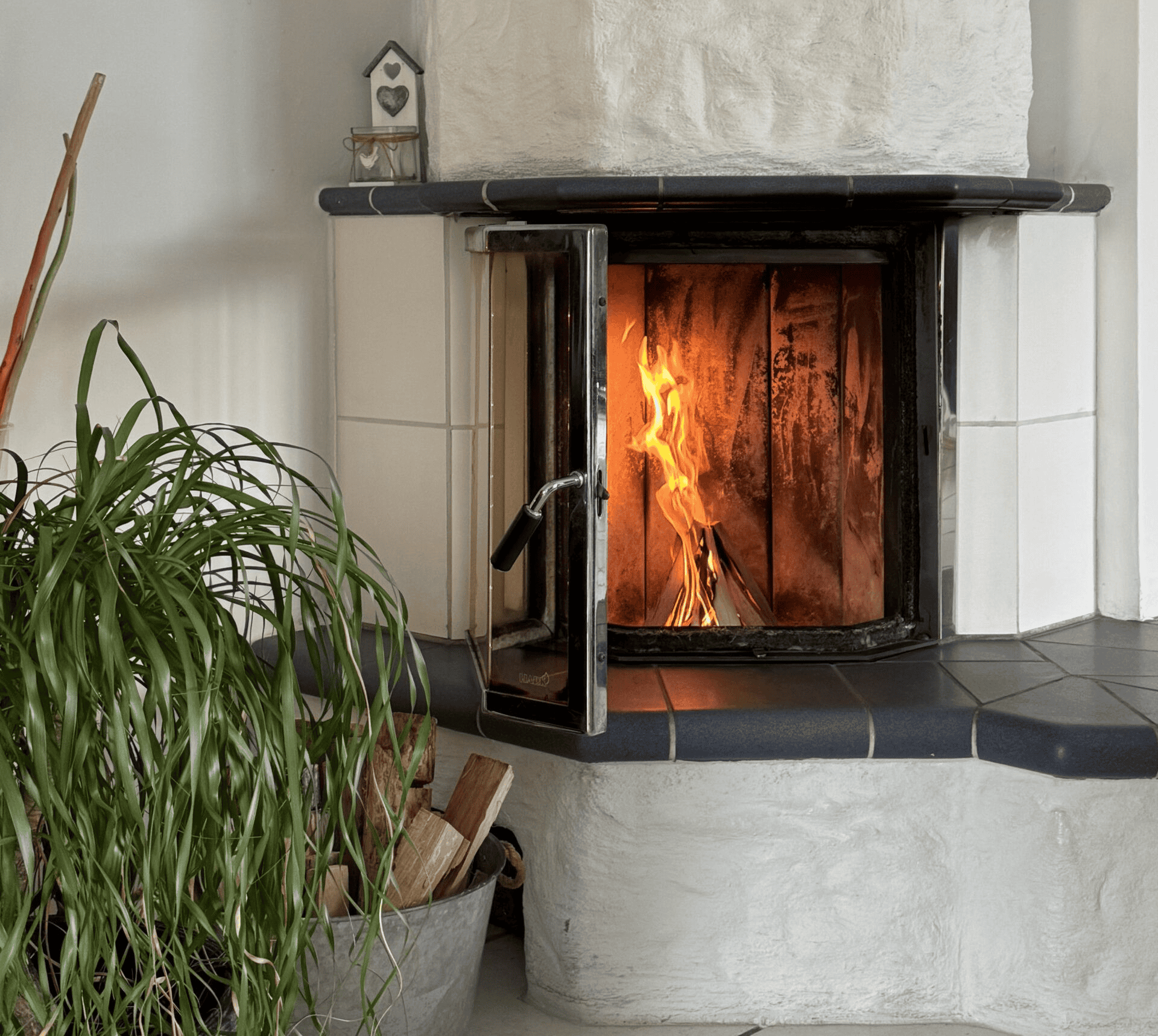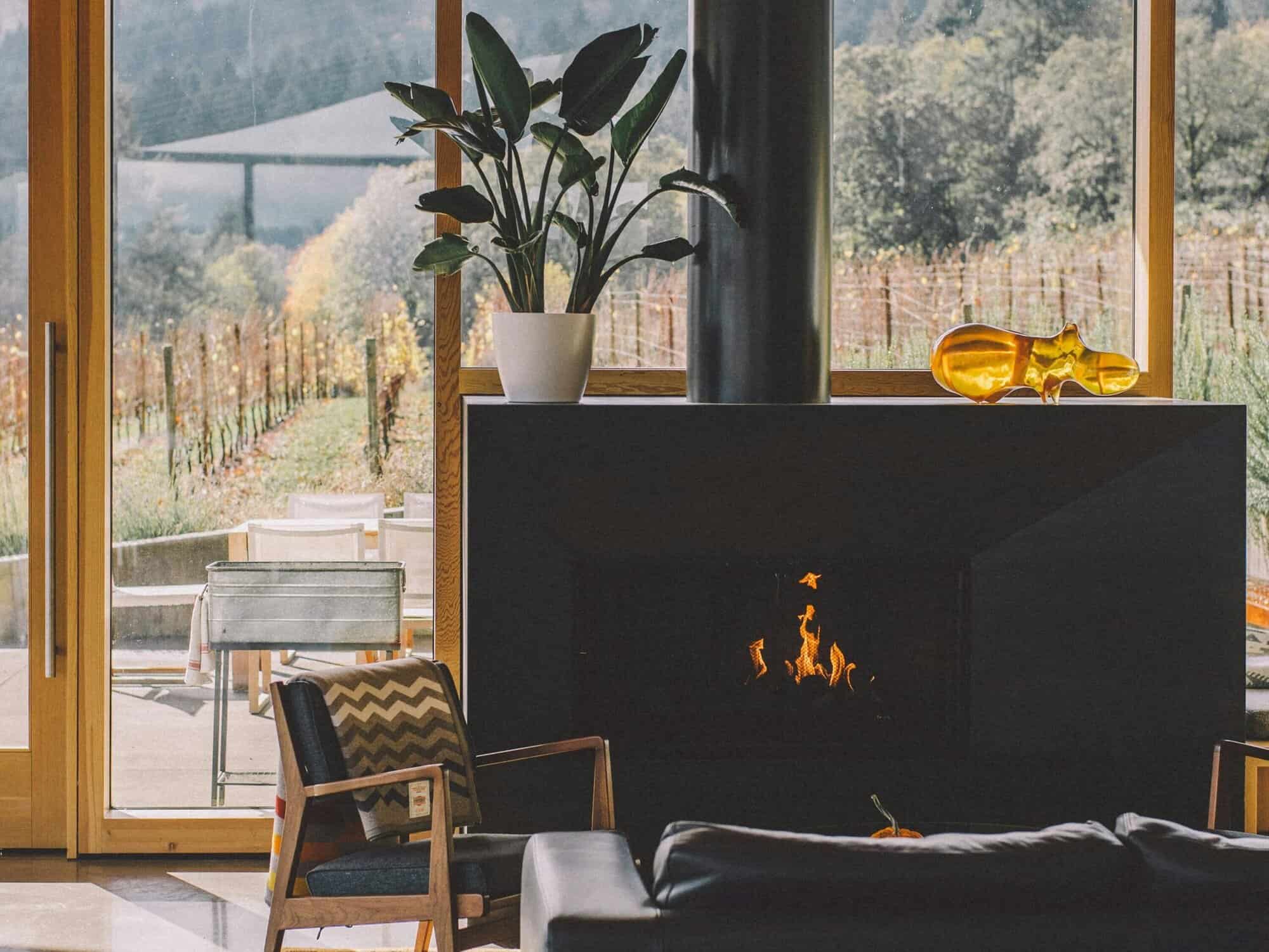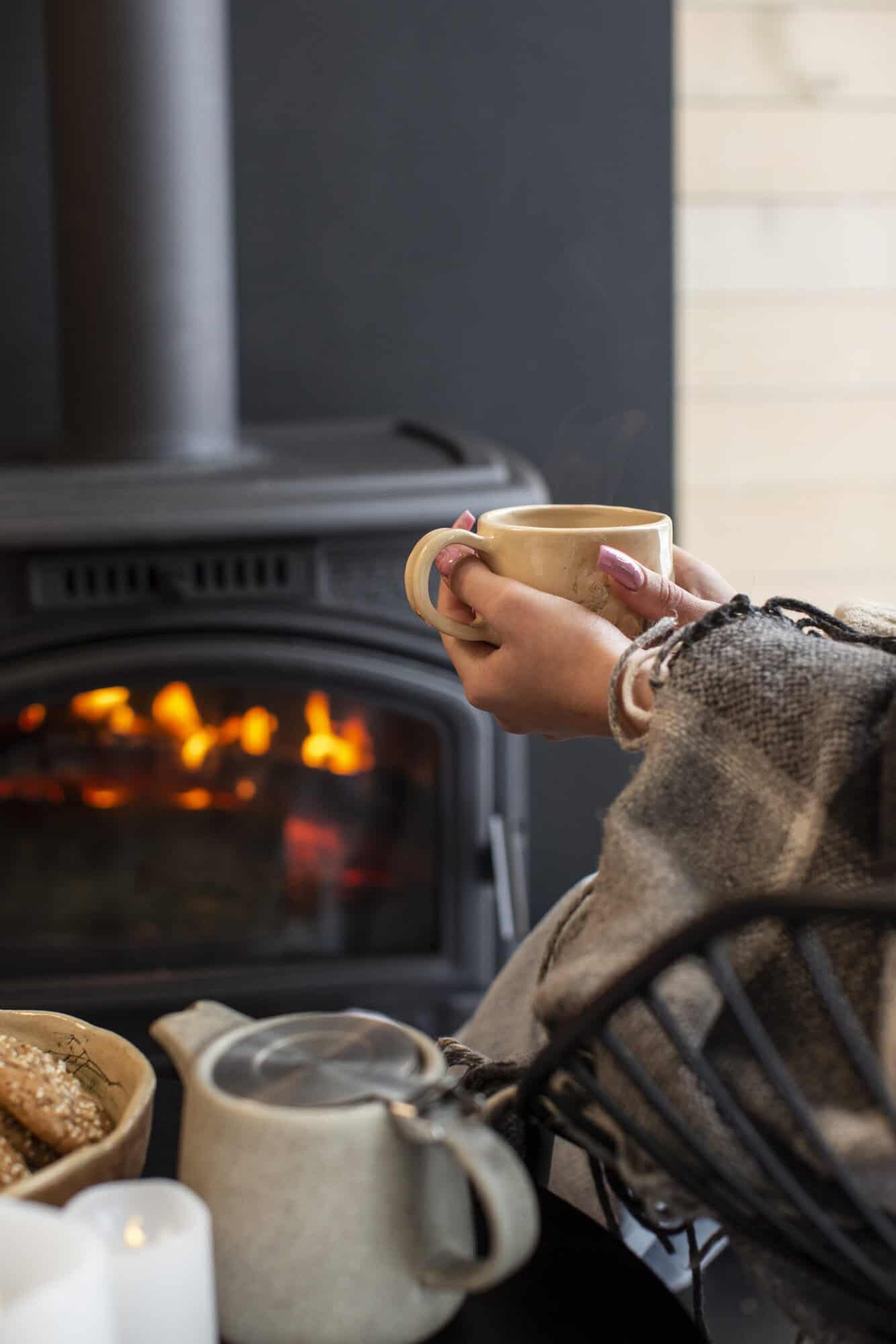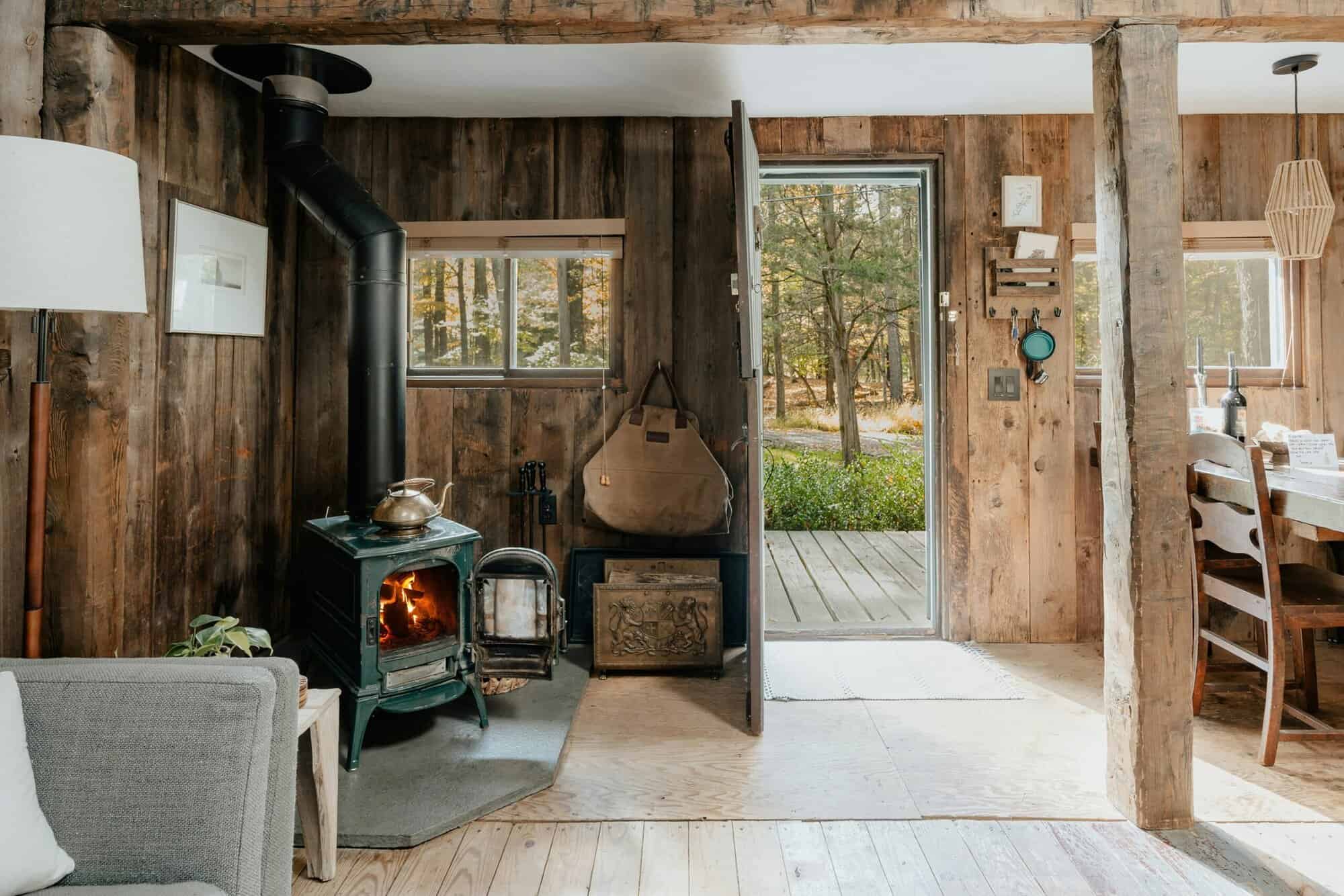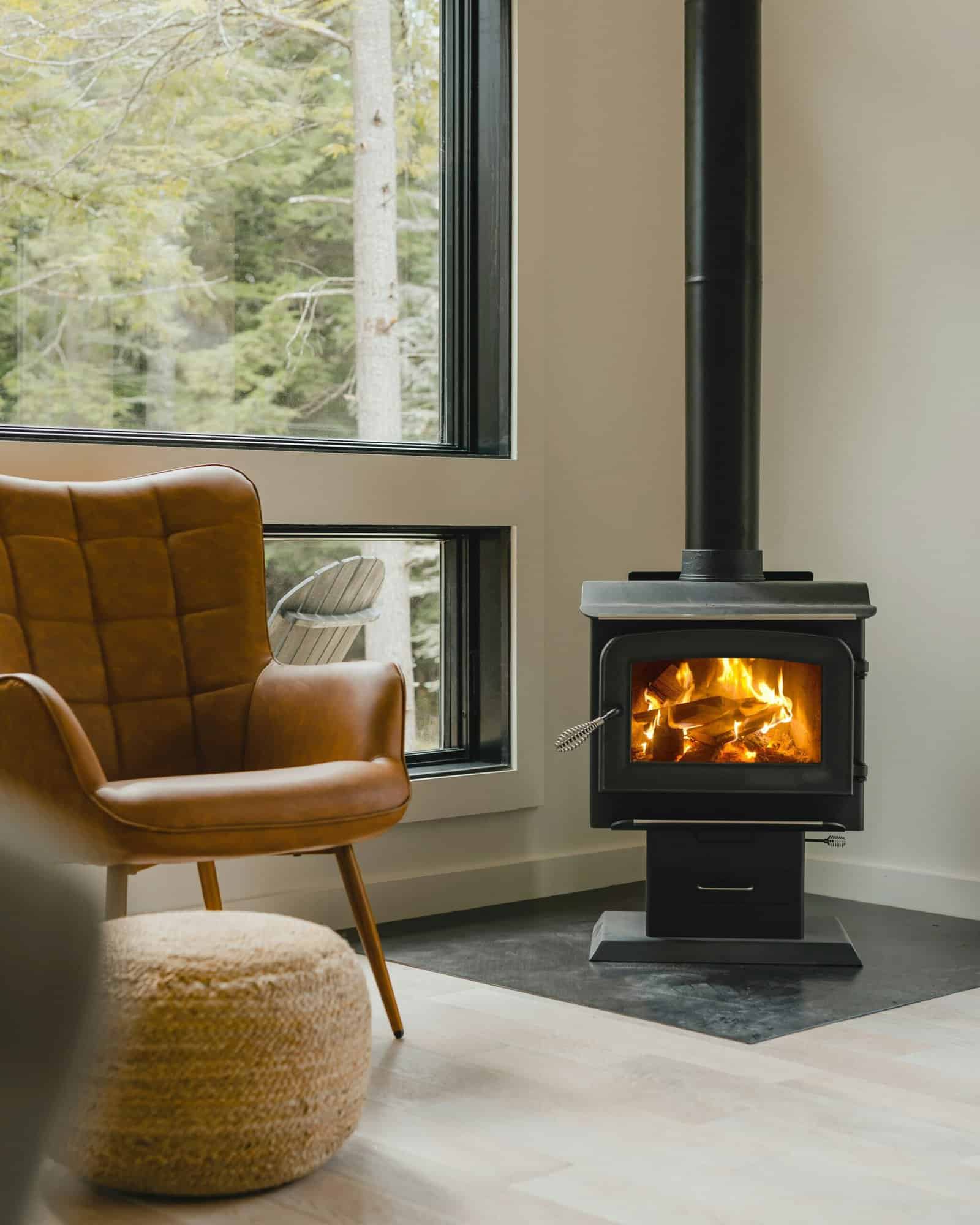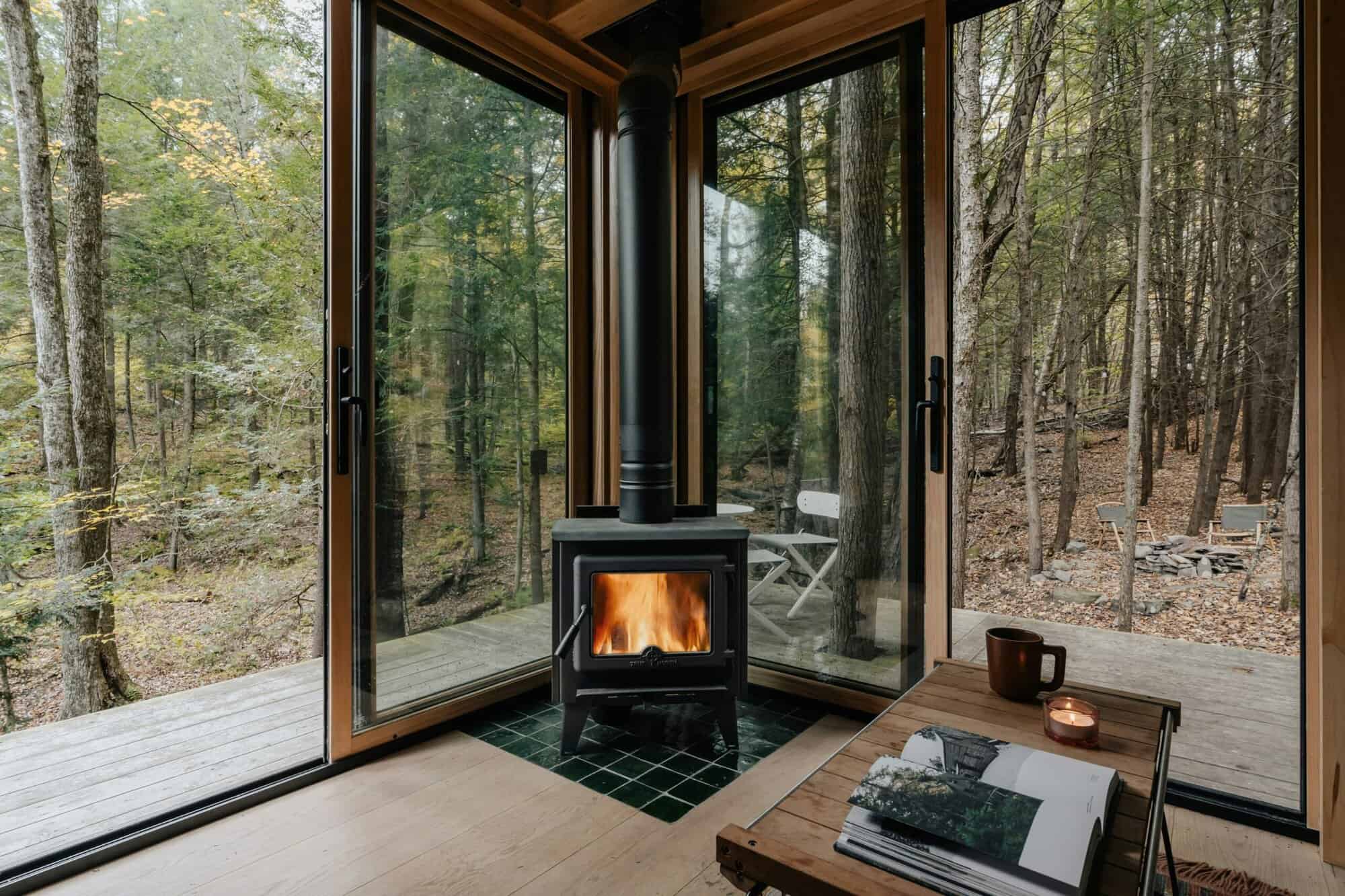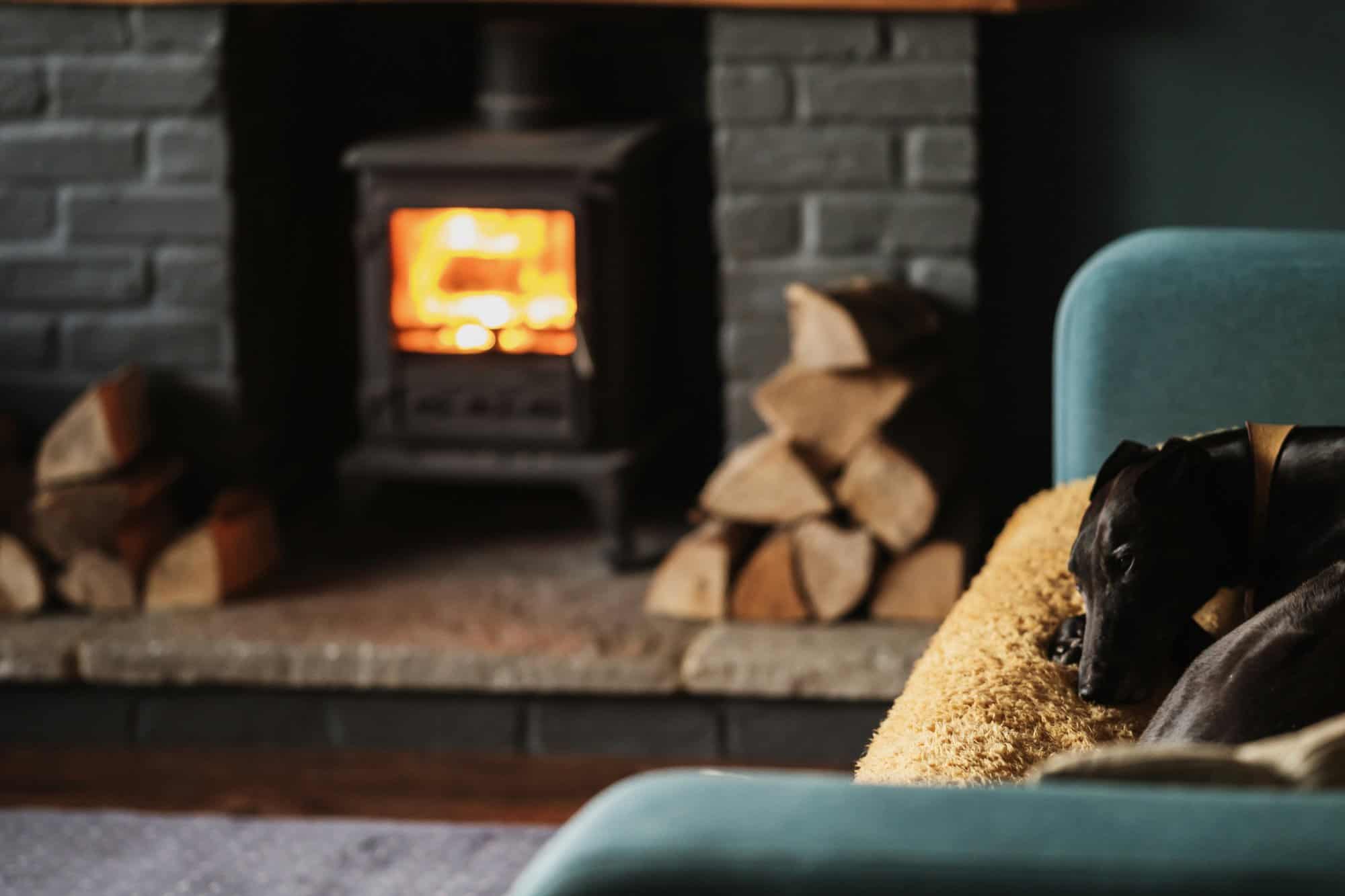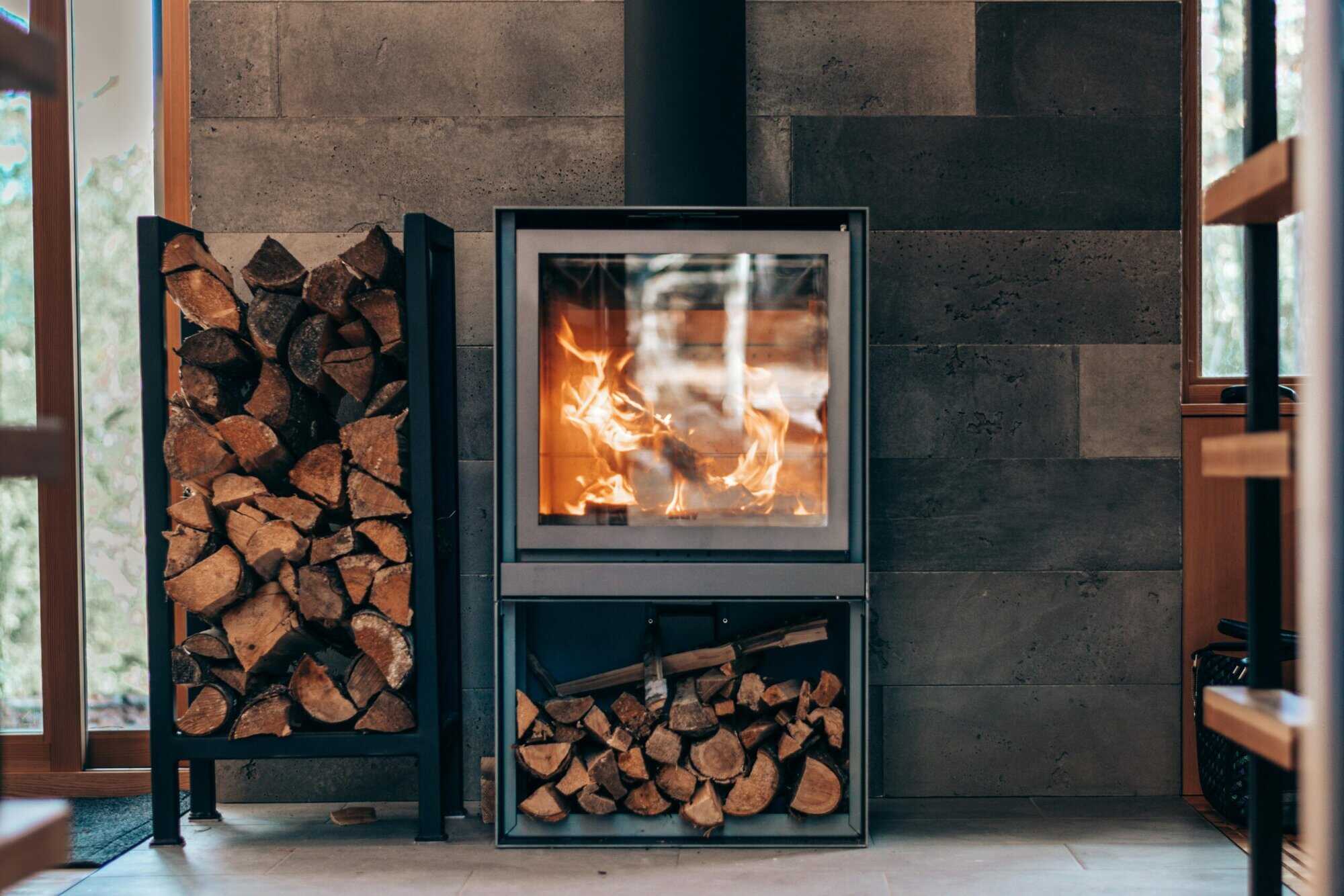Article
26. juni 2025 · 6 min
What Is the Minimum Clearance Around a Wood Burning Stove in the UK?
Unsure how close your wood stove can be to walls or furniture? Learn the UK’s minimum clearance rules—and how chimney fans and proper ventilation help ensure safe, efficient, and compliant installation.
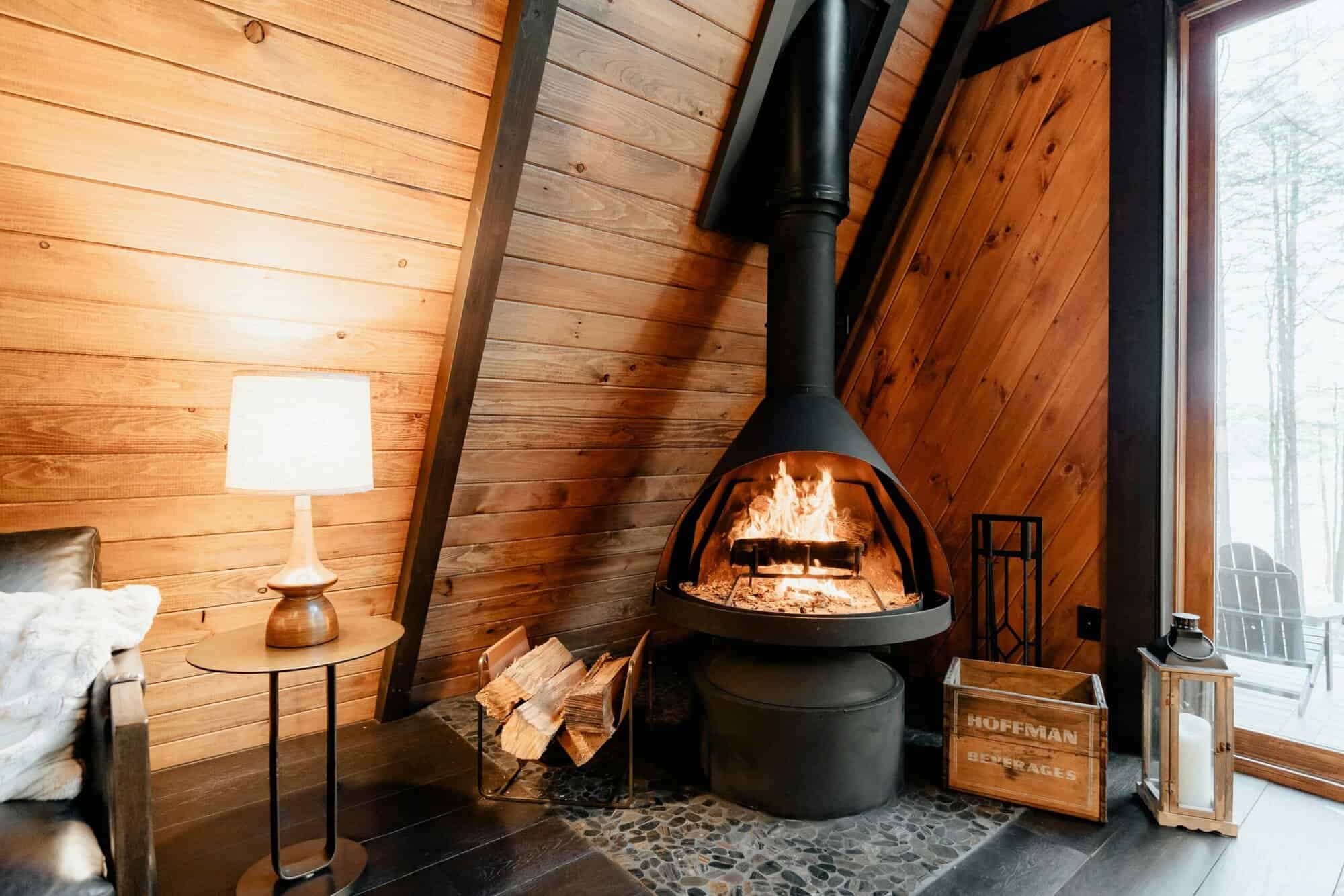
When installing a wood-burning stove, maintaining the correct clearance distance from walls, furniture, and other materials is essential for fire safety and optimal performance. UK building regulations specify minimum clearance distances to reduce the risk of overheating, fire hazards, and damage to surrounding structures.
Failing to adhere to these regulations can result in:
- Increased fire risk due to overheating of nearby surfaces.
- Inefficient stove performance, leading to excessive smoke and poor heat output.
- Legal non-compliance, which could result in penalties or the need for costly modifications.
Understanding these clearance requirements ensures a safe and compliant installation. Additionally, optimising draught and ventilation—for example, with a chimney fan—can help improve combustion efficiency and reduce overheating risks.
UK Regulations for Wood Stove Clearance and Installation
The UK’s Building Regulations Approved Document J outlines the safety requirements for installing a wood-burning stove, including minimum clearance distances to prevent overheating and fire hazards. These regulations apply to walls, ceilings, floors, and nearby combustible materials.
Minimum Clearance to Combustible Materials
- At least 150 mm (15 cm) from the sides of the stove to walls or furniture.
- At least 225 mm (22.5 cm) at the back if the stove is against a combustible wall.
- At least 300 mm (30 cm) in front of the stove to prevent sparks and embers from reaching flammable surfaces.
- At least 1,200 mm (1.2 m) to the ceiling above the stove.
Hearth Requirements
- A non-combustible hearth must extend at least 225 mm in front of the stove and 150 mm on each side.
- The minimum thickness of the hearth should be 12 mm for stoves under 100°C and at least 125 mm for hotter stoves.
Ventilation and Draught Considerations
To ensure efficient combustion and prevent overheating, the stove must have adequate airflow. Poor ventilation can cause excessive heat buildup and increase fire risks. A chimney fan can help improve draught, ensuring better smoke extraction and reducing heat accumulation around the stove.
Failing to follow these clearance and installation rules can lead to higher fire risks and legal non-compliance, making it crucial to adhere to safety guidelines.
Why Proper Clearance and Ventilation Matter for Safety
Ensuring the correct clearance around a wood-burning stove is not just about compliance — it is essential for fire safety, efficient operation, and long-term durability of both the stove and surrounding materials.
Fire Risks from Insufficient Clearance
If a stove is placed too close to walls, furniture, or other combustible materials, the high temperatures can cause:
- Scorching or warping of nearby surfaces.
- Accumulated heat buildup, increasing the risk of fire ignition.
- Deterioration of wall materials, particularly if they are not heat-resistant.
Over time, continuous exposure to heat weakens surrounding materials, making them more susceptible to ignition.
The Role of Ventilation in Preventing Overheating
A wood-burning stove needs proper airflow to burn efficiently. Without adequate ventilation, the fire may struggle to draw air, leading to:
- Incomplete combustion, which produces more smoke and soot.
- Excessive heat buildup, increasing fire risk.
- Poor energy efficiency, as the stove burns fuel inefficiently.
A chimney fan, such as those from Exodraft, can improve draught by ensuring that smoke is drawn out efficiently, preventing excessive heat accumulation in the stove area. This not only enhances safety but also improves combustion efficiency, reducing emissions and ensuring better heat output.
Maintaining the correct clearance and ventilation setup is critical to ensuring a safe, long-lasting wood-burning stove installation.
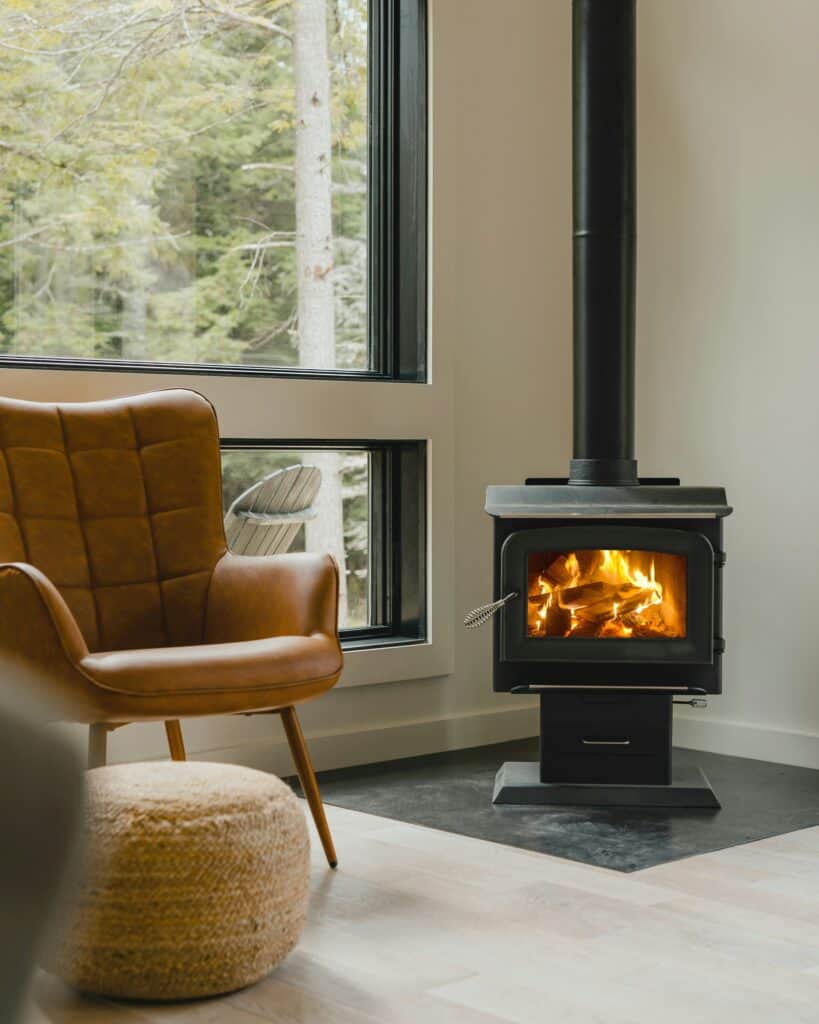
How to Improve Safety and Performance with Better Draught and Installation
Beyond maintaining the correct clearance distances, optimising airflow and heat management is crucial for both safety and efficiency. A properly installed stove with good draught control prevents overheating and ensures cleaner combustion, reducing the risk of smoke buildup and excessive heat in the room.
Ensuring Proper Chimney Draught
A stove’s performance depends heavily on chimney draught, which is responsible for drawing smoke and gases out of the stove. Poor draught can cause:
- Overheating of the stove and surroundings, leading to fire hazards.
- Increased smoke leakage into the room.
- Inefficient combustion, resulting in excessive soot buildup and heat loss.
Installing a chimney fan, such as an Exodraft, ensures consistent airflow, preventing these issues. A chimney fan:
- Stabilises draught, ensuring optimal heat control.
- Reduces the risk of overheating, protecting surrounding materials.
- Improves combustion efficiency, lowering emissions and fuel consumption.
Using Heat-Resistant Materials
When installing a wood-burning stove, it’s essential to use non-combustible materials around the stove area to minimise fire risks. This includes:
- Heat-resistant wall panels (such as fireproof plasterboard or tiles).
- Proper insulation behind the stove to prevent heat transfer.
- A non-combustible hearth made of stone, glass, or metal.
Regular Maintenance for Long-Term Safety
Even with correct installation, ongoing maintenance is key to preventing hazards. This includes:
- Annual chimney sweeping to remove soot and creosote buildup.
- Checking ventilation and draught systems to ensure they function correctly.
- Inspecting the stove and its components for wear and damage.
By combining correct clearance, good ventilation, and advanced draught control, homeowners can ensure safe and efficient operation of their wood-burning stove for years to come.
Ensuring a Safe and Compliant Wood-Burning Stove Setup
Installing a wood-burning stove requires more than just placing it in a convenient location — it must comply with UK building regulations to ensure fire safety, efficiency, and long-term durability.
By maintaining the correct clearance distances, homeowners can prevent overheating and fire hazards, protecting both their home and their stove. Proper ventilation and airflow management play a crucial role in combustion efficiency, ensuring that the stove burns fuel cleanly while avoiding excessive heat buildup.
For optimal performance and safety, homeowners should:
- Follow UK clearance regulations to protect walls, floors, and ceilings from heat damage.
- Use heat-resistant materials around the stove to reduce fire risks.
- Ensure proper ventilation to maintain stable combustion.
- Install a chimney fan, such as an Exodraft, to improve draught and prevent overheating.
- Conduct regular maintenance to keep the stove operating safely and efficiently.
A well-installed and properly maintained wood burner provides safe, efficient, and eco-friendly heating while complying with legal requirements. By investing in the right setup and technology, homeowners can enjoy the warmth of their stove with peace of mind.
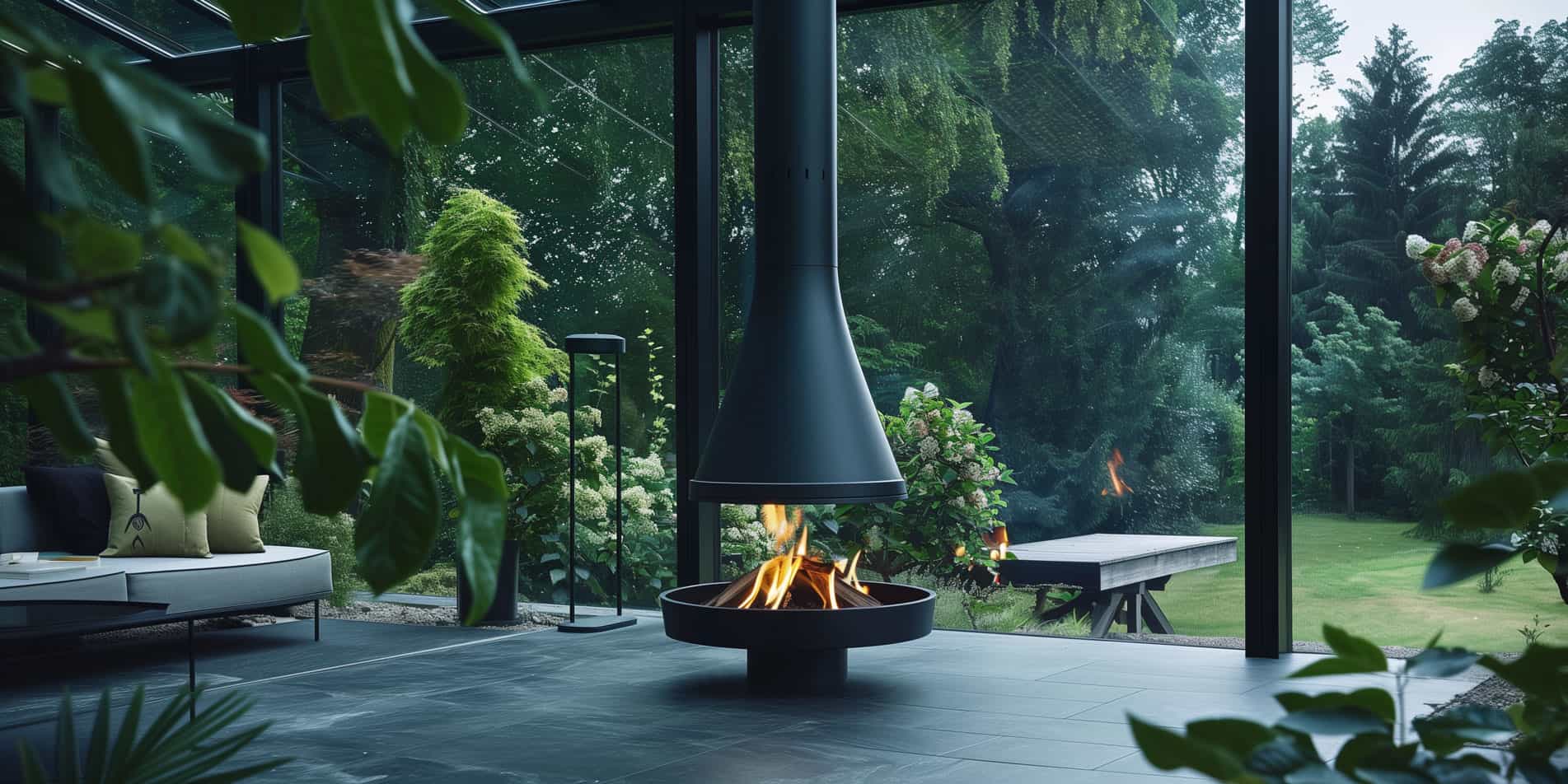
exodraft

